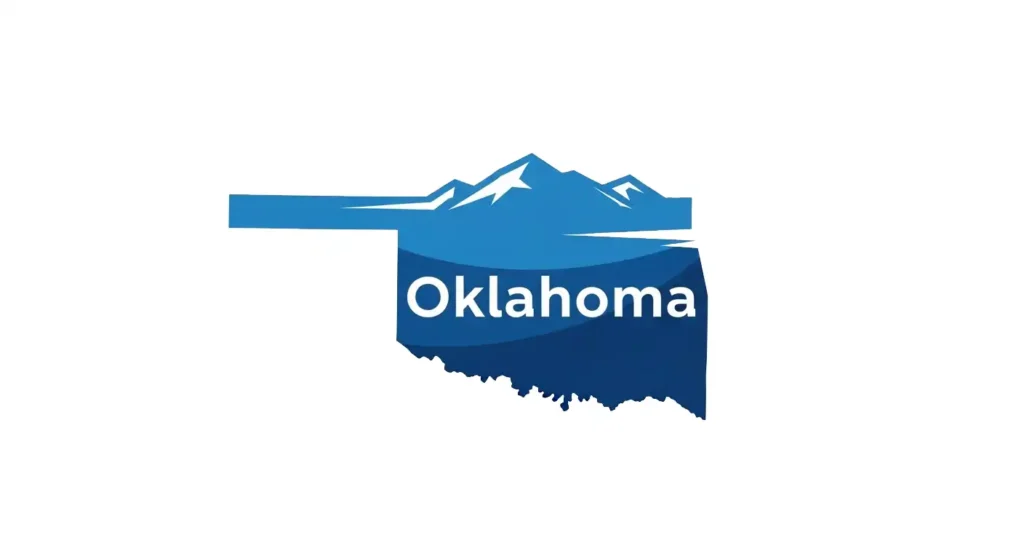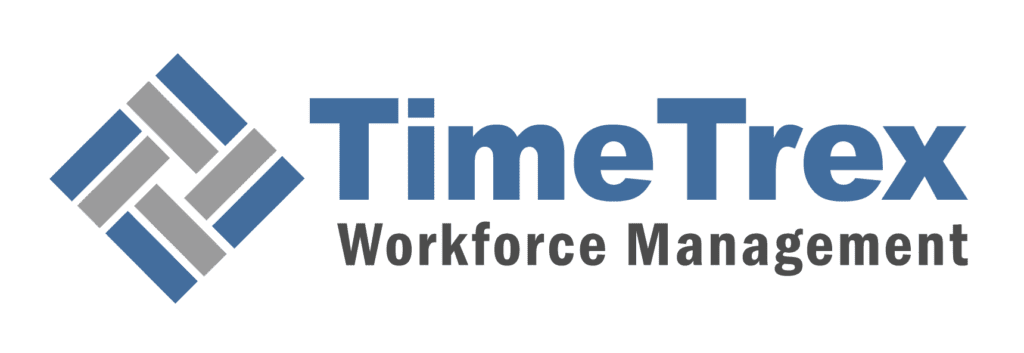
Oklahoma Payroll Tax: A Small Business Guide
For small business owners in Oklahoma, navigating the complexities of payroll tax is a critical responsibility. The landscape in 2025 is defined by a mix of federal obligations, unique state tax structures, and significant legislative reforms that promise to reshape future liabilities. Understanding these multifaceted components is essential for maintaining compliance, managing costs, and making informed strategic decisions.
This guide provides a deep dive into Oklahoma's payroll tax environment, covering federal and state requirements for 2025, upcoming changes, and how the Sooner State compares to its neighbors. We'll explore everything from FICA and FUTA taxes to the modernization of the state's unemployment system and a landmark bill that could eventually phase out personal income tax altogether.
On This Page:
- Federal Payroll Tax Obligations for Oklahoma Employers (2025)
- Oklahoma State-Specific Payroll Taxes (2025)
- Employer Compliance: Registration, Reporting, and Remittance
- The Horizon: Oklahoma Payroll and Income Tax Changes Beyond 2025
- Oklahoma Payroll Tax Calculator
- Comparative Glance: Oklahoma SUTA vs. Neighboring States (2025)
- Strategic Recommendations for Oklahoma Employers
- Conclusion: Key Takeaways and Future Outlook
Federal Payroll Tax Obligations for Oklahoma Employers (2025)
All employers in Oklahoma are subject to federal payroll tax laws. These responsibilities include federal income tax withholding, Social Security and Medicare (FICA) taxes, and Federal Unemployment (FUTA) taxes.
Federal Income Tax Withholding
Employers must withhold federal income tax from employee wages based on information from their Form W-4 and the progressive federal tax brackets. For 2025, these rates range from 10% to 37%. You can find detailed withholding tables in the IRS Publication 15-T, Employer's Tax Guide.
| Tax Rate | Taxable Income (Single Filers) | Taxable Income (Married Filing Jointly) |
|---|---|---|
| 10% | $0 to $11,925 | $0 to $23,850 |
| 12% | $11,925 to $48,475 | $23,850 to $96,950 |
| 22% | $48,475 to $103,350 | $96,950 to $206,700 |
| 24% | $103,350 to $197,300 | $206,700 to $394,600 |
| 32% | $197,300 to $250,525 | $394,600 to $501,050 |
| 35% | $250,525 to $626,350 | $501,050 to $751,600 |
| 37% | $626,350 or more | $751,600 or more |
Federal Insurance Contributions Act (FICA) Taxes
FICA taxes, which fund Social Security and Medicare, are shared between employers and employees. While income tax is progressive, the Social Security portion of FICA has a regressive effect, as it only applies up to a certain wage base, meaning high-earners pay a smaller percentage of their total income towards it.
- Social Security Tax: The 2025 rate is 6.2% for both the employee and employer (12.4% total) on wages up to the annual wage base of $176,100.
- Medicare Tax: The rate is 1.45% for both the employee and employer (2.9% total) with no wage limit.
- Additional Medicare Tax: An employee-only tax of 0.9% applies to wages over $200,000 for single filers ($250,000 for married filing jointly). Employers do not match this additional tax.
| Tax Component | Employee Rate | Employer Rate | 2025 Wage Base Limit |
|---|---|---|---|
| Social Security | 6.2% | 6.2% | $176,100 |
| Medicare (Base) | 1.45% | 1.45% | No limit |
| Additional Medicare Tax | 0.9% | Not Applicable | Wages > $200,000 |
Federal Unemployment Tax Act (FUTA)
FUTA tax is an employer-only tax that funds unemployment compensation. For 2025, the FUTA rate is 6.0% on the first $7,000 of wages paid to each employee. However, employers who pay their state unemployment taxes on time receive a credit of up to 5.4%, effectively lowering the FUTA rate to just 0.6%. This provides a strong financial incentive to stay current with Oklahoma SUI obligations.
Oklahoma State-Specific Payroll Taxes (2025)
Beyond federal requirements, Oklahoma employers manage state income tax withholding and State Unemployment Insurance (SUI) contributions.
Oklahoma State Income Tax Withholding
Oklahoma has a progressive income tax system, though the top marginal rate of 4.75% applies at a relatively low income threshold. For 2025, the standard deduction is $7,350 for single filers and $14,700 for those married filing jointly. A key advantage for employers is that Oklahoma generally has no local city or county income taxes to withhold.
| Tax Rate | Taxable Income (Single Filers) | Taxable Income (Married Filing Jointly) |
|---|---|---|
| 0.25% | $0 to $1,000 | $0 to $2,000 |
| 0.75% | $1,000 to $2,500 | $2,000 to $5,000 |
| 1.75% | $2,500 to $3,750 | $5,000 to $7,500 |
| 2.75% | $3,750 to $4,900 | $7,500 to $9,800 |
| 3.75% | $4,900 to $7,200 | $9,800 to $14,400 |
| 4.75% | $7,200 or more | $14,400 or more |
Oklahoma State Unemployment Insurance (SUI / SUTA)
Oklahoma's SUI system, funded by employer contributions, is undergoing significant reform. For 2025, the SUI taxable wage base has increased to $28,200 per employee, up from $27,000 in 2024. New employers are assigned a rate of 1.5%, while experienced employer rates range from 0.3% to 9.2%.
Crucially, pending legislation (Senate Bill 911) aims to modernize the SUI system, with an effective date of November 1, 2025. Key changes include reducing the maximum SUI tax rate to 6.5% and establishing new formulas for calculating rates, which should provide "greater fairness and predictability" for businesses.
| SUI Metric | 2025 Value |
|---|---|
| Taxable Wage Base | $28,200 |
| New Employer Rate | 1.5% |
| Experienced Employer Rate Range | 0.3% to 9.2% (Top rate potentially 6.5% post-SB911 implementation) |
Employer Compliance: Registration, Reporting, and Remittance
Proper registration and timely reporting are essential to avoid penalties. Before processing payroll, new businesses must register with two state agencies:
- Oklahoma Tax Commission (OTC): For income tax withholding, register for an Oklahoma Withholding Tax Account ID via the Oklahoma Taxpayer Access Point (OkTAP).
- Oklahoma Employment Security Commission (OESC): For SUI taxes, register for an unemployment account number through the OESC's EZ Tax Express portal.
Filing and Payment Deadlines
The frequency of remitting withheld state income tax depends on the amount withheld, with larger amounts requiring more frequent payments. SUI taxes and wage reports are due quarterly. For many businesses, Oklahoma's payment schedules align with federal deadlines, simplifying administration.
| Report / Tax Type | Frequency | Due Date | Agency |
|---|---|---|---|
| Quarterly Withholding Tax Return | Quarterly | April 30, July 31, Oct 31, Jan 31 | OTC |
| Withholding Annual Reconciliation | Annually | February 28 | OTC |
| SUI Tax Report & Payment | Quarterly | April 30, July 31, Oct 31, Jan 31 | OESC |
Special Considerations for Employers
- Military Spouses: Employees claiming an exemption under the Military Spouse Residency Relief Act must provide a renewed Form OW-9-MSE for 2025.
- Remote Workers: If you employ individuals who physically work in another state, you are generally required to withhold income tax and pay unemployment taxes for that state.
- Federal Exemption Expiry: Employees claiming "exempt" status from federal income tax must submit a new Form W-4 by February 15, 2025, to continue the exemption.
The Horizon: Oklahoma Payroll and Income Tax Changes Beyond 2025
Oklahoma is on the brink of major tax reform, driven by landmark legislation designed to reduce the personal income tax burden and simplify the tax code. These future changes signal a significant effort to enhance the state's economic competitiveness.
House Bill 2764: Income Tax Overhaul (Effective 2026)
Pending the governor's approval, House Bill 2764 will comprehensively reform personal income tax starting in 2026. Payroll systems will need to be updated to reflect these changes.
| Feature | Current System (2025) | Proposed System (2026 under HB 2764) |
|---|---|---|
| Top Marginal Income Tax Rate | 4.75% | 4.5% |
| Number of Income Tax Brackets | Six | Three |
The Path to Potential Income Tax Elimination
HB 2764 doesn't just stop at a rate cut; it creates a framework for the potential phase-out of personal income tax. Starting in 2026, the income tax rate will be automatically cut by an additional 0.25% in any year where state revenue growth meets specific benchmarks. To ensure fiscal responsibility, these cuts are paused if a revenue failure is declared. This ambitious plan is heavily reliant on sustained economic growth, with positive forecasts for 2025 suggesting the state is well-positioned to begin this process.
Simplify Your Oklahoma Payroll
Tired of tracking complex tax rates and deadlines? TimeTrex's automated payroll solutions can help. Use our free Oklahoma Payroll Tax Calculator to get instant calculations and see how much you can save.
Try the Free CalculatorComparative Glance: Oklahoma SUTA vs. Neighboring States (2025)
Understanding Oklahoma's SUTA landscape in a regional context is vital for businesses assessing competitiveness. Key metrics include the taxable wage base, new employer rates, and experienced employer rate ranges.
| State | 2025 Taxable Wage Base | 2025 New Employer Rate | 2025 Experienced Employer Rate Range |
|---|---|---|---|
| Oklahoma | $28,200 | 1.5% | 0.3% - 9.2% (potential 6.5% cap) |
| Texas | $9,000 | 2.7% (or industry avg.) | 0.25% - 6.25% |
| Kansas | $14,000 | 1.75% | 0.00% - 6.65% |
| Missouri | $9,500 | 2.376% | 0.00% - 6.00% |
| Arkansas | $7,000 | 2.0% | 0.20% - 10.10% |
| Colorado | $27,200 | 3.05% (Non-construction) | Varies (can exceed 8.68%) |
| New Mexico | $33,200 | 1.0% (or industry avg.) | 0.33% - 6.4% |
This comparison reveals that while Oklahoma's SUI wage base is higher than many neighbors, its new employer rate is highly competitive. Furthermore, the potential rate cap reduction from SB 911 would significantly enhance its standing for experienced employers, helping to offset the higher wage base.
Strategic Recommendations for Oklahoma Employers
The dynamic tax environment in Oklahoma requires a proactive approach from small businesses. Here are some key recommendations:
- Budget for Changes: Proactively budget for the increased SUI wage base and monitor OESC communications for new rate calculations under SB 911. Prepare payroll systems for the 2026 income tax bracket and rate changes.
- Review Compliance Systems: Ensure your payroll software is adaptable and can handle new tax structures, including managing withholding for out-of-state remote employees.
- Communicate with Employees: Clearly explain how the 2026 income tax reforms will affect employee withholding and net pay to manage expectations.
- Stay Informed: Keep up with announcements from the OTC and OESC. Track Oklahoma's economic performance, as it directly impacts the potential for future tax cuts.
- Engage with Professionals: Consult with qualified tax and payroll advisors to understand how these reforms will impact your specific business and to ensure ongoing compliance.
Conclusion: Key Takeaways and Future Outlook
For 2025, Oklahoma employers face a familiar set of federal and state payroll tax obligations, but with an SUI system on the verge of modernization. The anticipated implementation of Senate Bill 911 should bring more stability and cost relief to employers, even as the taxable wage base increases.
Beyond 2025, the state is embarking on an ambitious journey to reshape its tax identity through House Bill 2764. This legislation will deliver immediate relief in 2026 with a lower top tax rate and simpler brackets, while also establishing a long-term, revenue-based mechanism for potentially eliminating the personal income tax entirely.
This period of transformation demands heightened vigilance and strategic planning from small businesses. Those who invest in adaptable systems, stay informed, and engage in proactive planning will be best positioned to navigate the challenges and leverage the opportunities of Oklahoma's evolving tax landscape.
Disclaimer: The content provided on this webpage is for informational purposes only and is not intended to be a substitute for professional advice. While we strive to ensure the accuracy and timeliness of the information presented here, the details may change over time or vary in different jurisdictions. Therefore, we do not guarantee the completeness, reliability, or absolute accuracy of this information. The information on this page should not be used as a basis for making legal, financial, or any other key decisions. We strongly advise consulting with a qualified professional or expert in the relevant field for specific advice, guidance, or services. By using this webpage, you acknowledge that the information is offered “as is” and that we are not liable for any errors, omissions, or inaccuracies in the content, nor for any actions taken based on the information provided. We shall not be held liable for any direct, indirect, incidental, consequential, or punitive damages arising out of your access to, use of, or reliance on any content on this page.
About The Author

Roger Wood
With a Baccalaureate of Science and advanced studies in business, Roger has successfully managed businesses across five continents. His extensive global experience and strategic insights contribute significantly to the success of TimeTrex. His expertise and dedication ensure we deliver top-notch solutions to our clients around the world.
Time To Clock-In
Start your 30-day free trial!
Experience the Ultimate Workforce Solution and Revolutionize Your Business Today
- Eliminate Errors
- Simple & Easy To Use
- Real-time Reporting

Saving businesses time and money through better workforce management since 2003.
Copyright © 2025 TimeTrex. All Rights Reserved.
